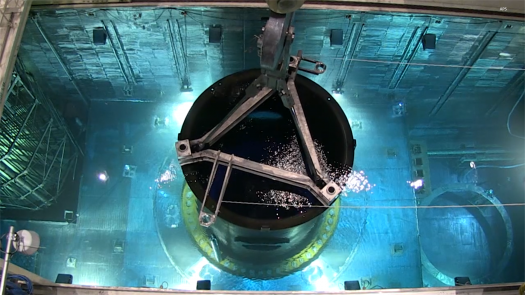General Science Notes On – Nuclear Reactor – For W.B.C.S. Examination.
Nuclear reactor, any of a class of devices that can initiate and control a self-sustaining series of nuclear fissions. Nuclear reactors are used as research tools, as systems for producing radioactive isotopes, and most prominently as energy sources for nuclear power plants.Continue Reading General Science Notes On – Nuclear Reactor – For W.B.C.S. Examination.
Nuclear reactors operate on the principle of nuclear fission, the process in which a heavy atomic nucleus splits into two smaller fragments. The nuclear fragments are in very excited states and emit neutrons, other subatomic particles, and photons. The emitted neutrons may then cause new fissions, which in turn yield more neutrons, and so forth. Such a continuous self-sustaining series of fissions constitutes a fission chain reaction. A large amount of energy is released in this process, and this energy is the basis of nuclear power systems.
In an atomic bomb the chain reaction is designed to increase in intensity until much of the material has fissioned. This increase is very rapid and produces the extremely prompt, tremendously energetic explosions characteristic of such bombs. In a nuclear reactor the chain reaction is maintained at a controlled, nearly constant level. Nuclear reactors are so designed that they cannot explode like atomic bombs.
Most of the energy of fission—approximately 85 percent of it—is released within a very short time after the process has occurred. The remainder of the energy produced as a result of a fission event comes from the radioactive decay of fission products, which are fission fragments after they have emitted neutrons. Radioactive decay is the process by which an atom reaches a more stable state; the decay process continues even after fissioning has ceased, and its energy must be dealt with in any proper reactor design.
The course of a chain reaction is determined by the probability that a neutron released in fission will cause a subsequent fission. If the neutron population in a reactor decreases over a given period of time, the rate of fission will decrease and ultimately drop to zero. In this case the reactor will be in what is known as a subcritical state. If over the course of time the neutron population is sustained at a constant rate, the fission rate will remain steady, and the reactor will be in what is called a critical state. Finally, if the neutron population increases over time, the fission rate and power will increase, and the reactor will be in a supercritical state.
Before a reactor is started up, the neutron population is near zero. During reactor start-up, operators remove control rods from the core in order to promote fissioning in the reactor core, effectively putting the reactor temporarily into a supercritical state. When the reactor approaches its nominal power level, the operators partially reinsert the control rods, balancing out the neutron population over time. At this point the reactor is maintained in a critical state, or what is known as steady-state operation. When a reactor is to be shut down, operators fully insert the control rods, inhibiting fission from occurring and forcing the reactor to go into a subcritical state.
Please subscribe here to get all future updates on this post/page/category/website


 +919674493673
+919674493673  mailus@wbcsmadeeasy.in
mailus@wbcsmadeeasy.in







































































































